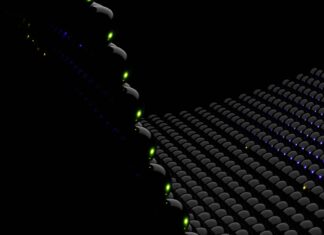Headless CMS (Content Management System) has emerged as a powerful solution for managing and delivering digital content across various platforms and devices. Unlike traditional CMS platforms, which are tightly coupled with a specific front-end presentation layer, headless CMS decouples the content management backend from the front-end, providing greater flexibility, scalability, and versatility. In this article, we will explore the concept of headless CMS, its benefits, and its impact on the modern digital landscape.
Headless CMS refers to a content management system that focuses solely on managing and organizing content, without being tied to a specific front-end or presentation layer. It provides a back-end content repository that allows content creators and editors to create, edit, and organize content in a structured manner. The content is then delivered through APIs (Application Programming Interfaces) to various front-end applications, such as websites, mobile apps, IoT devices, or any other digital touchpoint.
The decoupling of the front-end and back-end in a headless CMS architecture offers numerous advantages. Firstly, it provides the flexibility to deliver content to multiple channels and platforms. With a traditional CMS, the content is tightly integrated with the front-end, making it challenging to reuse or repurpose the content for different devices or experiences. In a headless CMS, content can be easily consumed by any application or device through APIs, enabling organizations to deliver consistent content across websites, mobile apps, smart devices, and other emerging digital platforms.
Secondly, headless CMS allows for faster development and deployment cycles. With a decoupled architecture, front-end developers can work independently from the back-end, making changes to the user interface or design without impacting the content management process. This separation of concerns enables parallel development and empowers teams to iterate quickly, reducing time to market and facilitating agile development methodologies.
Moreover, headless CMS simplifies content management and enables content creators to focus on creating engaging and impactful content. The separation of the content management backend from the presentation layer eliminates the complexities of managing different content templates, layouts, and presentation logic. Content creators can work within a unified and intuitive interface, focusing solely on crafting compelling content without the need to worry about how it will be displayed on different platforms or devices.
In addition to flexibility and ease of content management, headless CMS offers scalability and future-proofing benefits. As technology evolves and new devices and platforms emerge, organizations can seamlessly adapt and integrate with the changing digital landscape. With a headless architecture, organizations are not bound by the limitations of a specific CMS or presentation layer. They can easily integrate new technologies, adopt emerging trends, and adapt to evolving customer expectations, ensuring their digital experiences remain modern and relevant.
Headless CMS also fosters a more efficient and collaborative development process. Front-end developers can utilize their preferred frameworks, libraries, and tools to build engaging user experiences, while back-end developers can focus on creating robust content management systems. This separation allows developers to specialize in their respective domains, resulting in optimized workflows, improved productivity, and increased collaboration between teams.
Furthermore, headless CMS offers improved security and performance. By decoupling the front-end from the back-end, the attack surface is significantly reduced, as the content management system is not directly exposed to the internet. This separation enhances security by limiting potential vulnerabilities and minimizing the impact of security breaches. Additionally, headless CMS allows for better performance optimization, as front-end applications can be specifically optimized for their target platforms without being weighed down by unnecessary back-end functionalities.
Another advantage of headless CMS is the ability to integrate with other systems and services seamlessly. With APIs serving as the bridge between the content management system and other applications, organizations can easily connect their CMS with third-party tools, services, or platforms. This integration capability enables organizations to leverage additional functionalities, such as e-commerce, personalization engines, analytics tools, or marketing automation systems, enhancing the overall digital experience and empowering marketers to deliver personalized and targeted content to their audiences.
In conclusion, headless CMS has emerged as a game-changing approach to content management, providing organizations with the flexibility, scalability, and versatility required to thrive in today’s digital landscape. By decoupling the back-end content management system from the front-end, headless CMS offers numerous benefits, including multi-channel content delivery, faster development cycles, streamlined content management, scalability, enhanced security, improved performance, and seamless integration capabilities. As digital experiences continue to evolve, headless CMS enables organizations to adapt, innovate, and deliver compelling content across various platforms and devices, empowering them to stay ahead of the curve and create impactful digital experiences for their audiences.
API-First Approach:
Headless CMS focuses on providing robust APIs that allow content to be accessed and delivered to any digital platform or application, enabling seamless integration and content distribution.
Content Modeling and Structuring:
Headless CMS offers flexible content modeling capabilities, allowing administrators to define custom content types, fields, and relationships, ensuring content is organized and structured according to specific requirements.
Content Versioning and Workflow:
Headless CMS provides features for content versioning, allowing users to track changes, compare revisions, and revert to previous versions if needed. It also supports content workflows, enabling collaboration and approval processes for content creation and publication.
Content Localization and Multilingual Support:
Headless CMS offers built-in features for managing multilingual content, allowing organizations to create and manage content in multiple languages and deliver localized experiences to their global audiences.
Content Personalization and Targeting:
Headless CMS empowers marketers with tools for content personalization and targeting. It enables the creation of dynamic content that adapts to user profiles, behaviors, and preferences, enhancing the overall user experience and driving engagement.
Headless CMS has become a game-changer in the world of digital content management, offering a flexible and dynamic approach to creating, organizing, and delivering content across various platforms and devices. The concept of headless CMS has gained traction as organizations seek innovative ways to provide engaging and personalized digital experiences to their audiences. In this article, we will explore the evolution of headless CMS, its impact on the digital landscape, and the potential it holds for the future of content management.
In traditional CMS systems, the back-end content management system and the front-end presentation layer are tightly coupled. This coupling means that the content creation and management process is intricately tied to how the content is displayed and delivered on the website or application. While this approach has served organizations well for many years, the emergence of new technologies, devices, and user expectations has prompted a need for a more flexible and scalable content management solution.
Enter headless CMS, a paradigm shift in content management that separates the content creation and management backend from the front-end presentation layer. With headless CMS, content is created, organized, and stored in a back-end repository, while the front-end application consumes the content via APIs. This decoupling allows for greater flexibility and versatility in delivering content to different platforms and devices, such as websites, mobile apps, voice assistants, wearables, and more.
The rise of headless CMS can be attributed to several factors. Firstly, the proliferation of digital touchpoints and the demand for seamless user experiences across these touchpoints have necessitated a more agile and adaptable content management approach. Organizations now need to deliver content to various platforms, each with its own unique requirements and constraints. Headless CMS provides the infrastructure to distribute content efficiently, enabling organizations to reach their audiences wherever they may be.
Secondly, the increasing need for personalization and targeted content has driven the adoption of headless CMS. With the decoupling of the back-end and front-end, organizations can leverage data and analytics to deliver personalized content to individual users or targeted segments. This level of personalization enhances the user experience, drives engagement, and ultimately leads to better conversion rates and customer satisfaction.
Another factor contributing to the popularity of headless CMS is the rapid advancement of technology and the emergence of new platforms and devices. With the rise of mobile apps, IoT devices, voice interfaces, and augmented reality, organizations must adapt their content delivery strategies to cater to these evolving platforms. Headless CMS provides the necessary infrastructure to deliver content seamlessly across these new channels, ensuring consistent and engaging experiences for users.
Moreover, headless CMS offers developers greater flexibility and freedom in building front-end applications. Since the back-end and front-end are decoupled, developers have the liberty to choose the technologies, frameworks, and tools that best suit their needs. This flexibility empowers developers to create highly performant and innovative user interfaces, unencumbered by the limitations imposed by a monolithic CMS system.
Headless CMS also opens up opportunities for content reuse and repurposing. With the content stored in a structured format in the back-end repository, organizations can easily repurpose content across different platforms and devices. For example, a single piece of content, such as a blog post, can be dynamically rendered in different formats for web, mobile, and voice interfaces, ensuring a consistent message and brand experience across all channels.
Furthermore, headless CMS fosters collaboration and agility within organizations. With a clear separation between the content creation and front-end development processes, content creators can focus on creating engaging and impactful content, while front-end developers can iterate and experiment with the user interface. This collaboration streamlines the content management workflow and allows for faster iterations, ensuring that organizations can adapt to changing market trends and audience preferences more effectively.
The flexibility of headless CMS extends to its ability to integrate with other systems and services. With the content accessible through APIs, organizations can easily connect their CMS with other tools and services, such as e-commerce platforms, marketing automation systems, CRM systems, or analytics tools. This integration allows for seamless data flow and empowers organizations to leverage additional functionalities to enhance the overall user experience.
As headless CMS gains traction, industry standards and best practices are emerging to guide its implementation and usage. Organizations can now choose from a range of headless CMS solutions, each with its own set of features and capabilities. These solutions often provide intuitive interfaces for content creation and management, robust APIs for content delivery, and extensive documentation and support for developers.
Looking ahead, the future of headless CMS looks promising. As technology continues to evolve, we can expect further advancements in areas such as artificial intelligence, machine learning, voice interfaces, and augmented reality. Headless CMS is well-positioned to adapt to these changes, providing the foundation for organizations to deliver content to new and emerging platforms seamlessly.
In conclusion, headless CMS represents a paradigm shift in content management, decoupling the back-end content creation and management process from the front-end presentation layer. This approach offers organizations greater flexibility, scalability, and adaptability in delivering content across multiple platforms and devices. With the rise of new technologies, the demand for personalized experiences, and the proliferation of digital touchpoints, headless CMS has emerged as a powerful solution for organizations seeking to create engaging and dynamic digital experiences. As the digital landscape continues to evolve, headless CMS will play a crucial role in shaping the future of content management and enabling organizations to stay at the forefront of innovation.


















